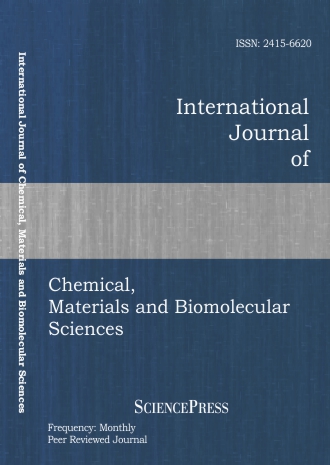
Scholarly
Volume:6, Issue: 5, 2012 Page No: 449 - 453
International Journal of Chemical, Materials and Biomolecular Sciences
ISSN: 2415-6620
1629 Downloads
Modification and Characterization of Bacterial Cellulose Biopolymer as Proton Conducting Membrane
This study describes the preparation of a novel proton conducting membranes based on bacterial cellulose (BC) modified by grafting of 2-acrylamido-2-methyl-1 -propanesulfonic acid (AMPS) through UV-induced graft polymerization. These AMPS-g-BC membranes have been characterized by various techniques including FTIR, SEM and TGA, to find their successful grafting of AMPS on BC, surface morphology and thermal stability, respectively. Physical properties of AMPS-g-BC membranes have been assessed in terms of Lamda value( λ ), ion exchange capacity(IEC) and proton conductivity. The relationship between degree of grafting and AMPS concentration used for grafting has been determined by weight gain method. An optimum proton conductivity equal to 2.89x10-2 S cm-1 and IEC value equal to 1.79 mmol g-1 have been obtained when 20 wt% AMPS concentration is used for grafting (i.e. the corresponding membrane is notated as AMPS20-g-BC).
References:
[1] O. D. Klemm, D. Schumann, U. Udhardt, S. Marsch, Prog. Polym. Sci. 26